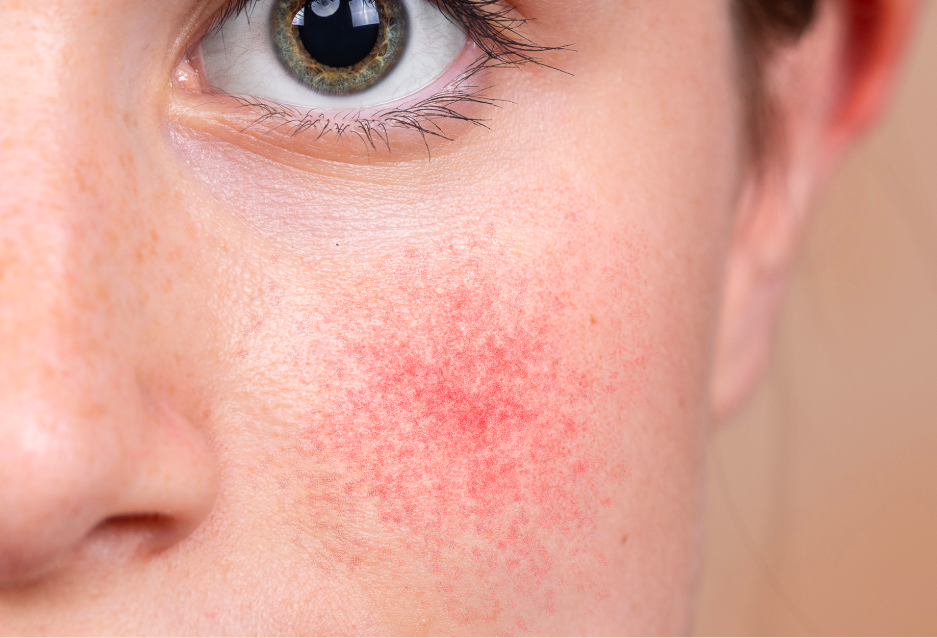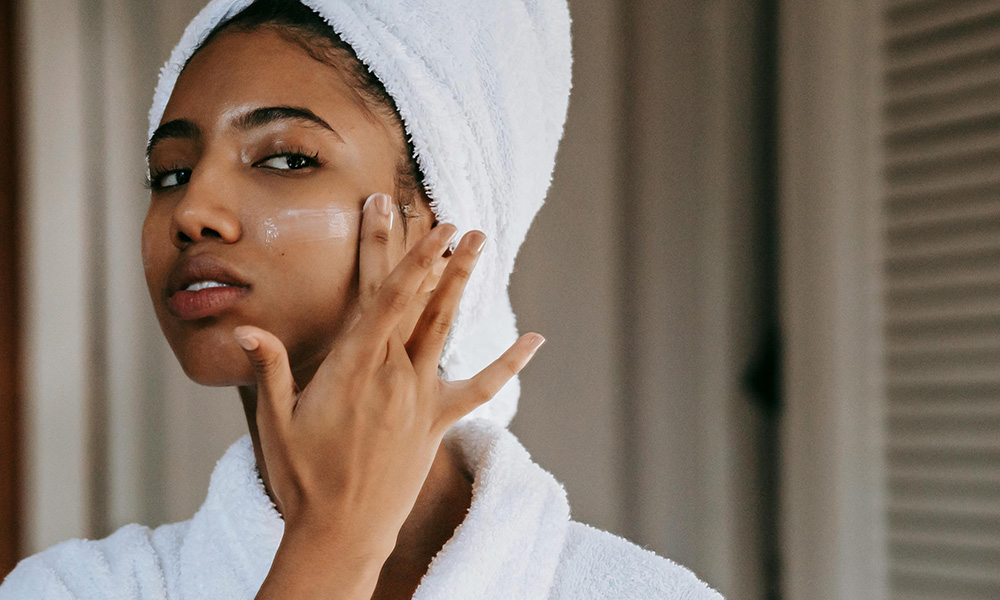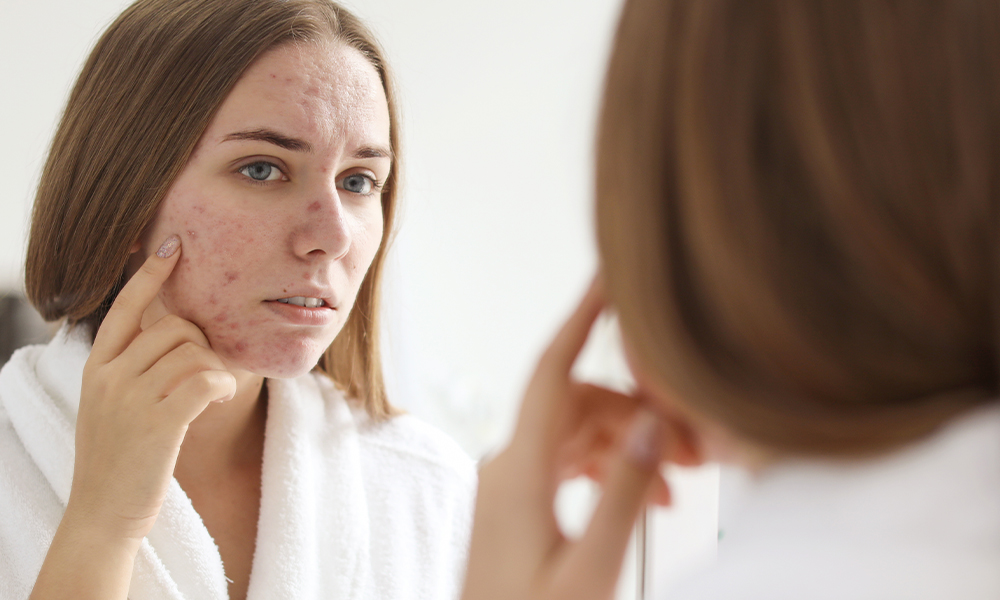Rosacea Awareness Month: Five Things to Know About Rosacea

Link to share article here:
Skincare 101: Exfoliation And Tretinoin
If you’ve recently been prescribed tretinoin, you’re probably excited to enhance your glow, boost collagen levels and keep spots at bay. You’re also probably thinking about adapting your skincare routine to cater for this powerful ingredient. And, if you’ve been a fan of using exfoliation techniques to remove dead skin cells, you might be wondering if you can continue with your favourite methods.
Today we’re here to talk about all things tretinoin and exfoliation, and help you build a routine that’s both safe and effective. Read on for our derm-approved advice, and don’t forget to bookmark this page for reference when you need it.
The effects of tretinoin
Tretinoin is a member of the retinoid family, a group of synthetic and naturally-occurring compounds derived from Vitamin A. Other retinoids include retinol, retinaldehyde and retinal, which vary in strength.
“Tretinoin is the most potent retinoid out there that dermatologists have been prescribing for decades,” explains Dr Malvina Cunningham, Consultant Dermatologist at Skin + Me. “We have a huge amount of evidence proving its effectiveness in treating everything from acne, hyperpigmentation to the visible signs of skin ageing which is why it’s the gold-standard ingredient for all these skin concerns.”
So, tretinoin is a highly effective skincare ingredient, but you do need to use it with care. That’s why you won’t find it on the shelves of your local shop – it’s only available on prescription in the UK.
Combining exfoliation and tretinoin
Tretinoin works on two levels. In the deeper layer of skin, known as the dermis, tretinoin increases collagen production, for plumper, more youthful looking skin.
It also gets to work in the epidermis, which is the outer layer of skin. Here it boosts cell renewal and speeds up the removal of dead cells and debris that can block pores. This stimulation has an exfoliative effect – it’s why you might notice some mild peeling or flaking when you first start using tretinoin.
You’ll get more effective results from tretinoin than any other over-the-counter exfoliants like BHAs and AHAs. This is why there’s usually no need to use other exfoliants when you’re on tretinoin – it’s best to avoid doubling up, which can damage the skin barrier and cause irritation. However, if you’re particularly loyal to an exfoliative product, it might be okay to use it occasionally – more on that in a second.
Building a skincare routine with tretinoin
It’s important to give your skin time to adapt to tretinoin when you first start using it. That’s why, here at Skin + Me, we start our members on low doses that only increase once their skin is able to tolerate its potency.
Less is more when you’re using powerful actives, so it’s a good time to reconsider your routine and keep things simple. “We’ll always recommend a stripped back skincare routine consisting of a moisturiser, cleanser and sunscreen to support your skin barrier,” says Dr Jason Thomson, Head of Medical at Skin + Me.
Start with a gentle cleanser, like the Skin + Me Purify + Prep range, which will remove dirt, oil and buildup without stripping the skin. A nourishing moisturiser is also essential when using tretinoin – as Dr Jason says, “Look for a moisturiser that’s skin type-specific, non-comedogenic and has humectants like hyaluronic acid and barrier boosting ingredients like ceramides.” This will help your skin stay hydrated and happy while you’re using tretinoin.
Sunscreen is another non-negotiable step in your skincare routine, as Dr Malvina explains. “Retinoids can make you more sensitive to sunlight during the first few months of use,” she says. “Retinoids are also broken down by the sun, so always incorporate them into your evening skincare routine, after cleansing.”
Our Skin + Me Daily Defence Oil-free SPF 50 Sunscreen is a great protector for all skin types and tones – it dries down clear and doubles up as a primer under makeup. It’s also fortified with niacinamide and vitamin E, to regulate oil production and strengthen your skin barrier.
And what about exfoliators? Well, our team recommends avoiding strong mechanical scrubs which can scratch the skin’s surface – but chemical exfoliators can be approached with caution in some cases.
“When starting off your retinoid journey we advise avoiding any other active skincare ingredients in particular exfoliants such as AHAs, BHAs and harsh cleansers or toners to minimise the risk of irritation,” says Dr Jason.
However, this doesn’t mean you have to never use them again. “These products can later be introduced once retinoids are tolerated to maximise the benefit of both active ingredients,” Dr Jason continues. You could use them occasionally once your skin has adapted to tretinoin – it might be worth taking a couple of days off from your tretinoin when you want to use them.
As always, listen to your skin – red, sore skin is telling you that it’s not happy, so remember to treat it with plenty of TLC if you feel any irritation. And remember you can always reach out to your clinician if you’re experiencing discomfort, or want skincare routine advice – Skin + Me members can contact the Dermatology Support Team here.
Final thoughts
Tretinoin is a powerful active ingredient that clears pores and sweeps away dead skin cells, usually eliminating the need for other exfoliants. However, if you want to use them then take it slow and chat to a professional if you’re worried about your skin. Our top advice is to build a simple skincare regime that supports your skin and is tailored to your skin type. Now, go get that glow!
New to Skin + Me? Get your first month of personalised skincare for £4.99 with promo code DOSE – complete our quick consultation here.
Looking for a routine refresh? Add the Dream Routine to your Skin + Me subscription.
In need of a restock? Head to The Skincare Shop for one-off purchases of your Routine Essentials.



